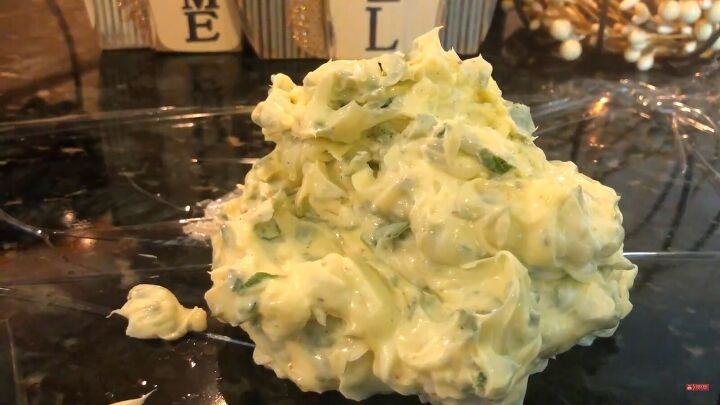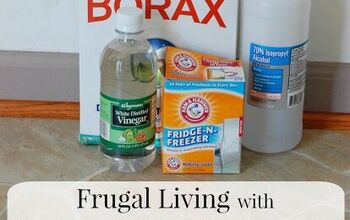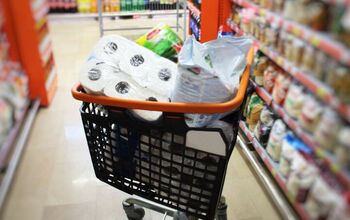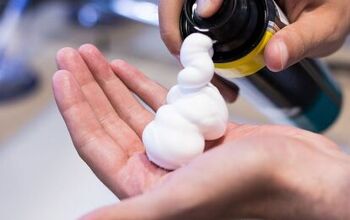How to Start a Homestead Without Land

If you are looking for tips on how to start a homestead, but you live in a city, I've got you. I have started my own urban homestead, and it is going great.
Here are some of the projects I have been busy with recently as someone running a homestead without land.
1. Sage butter
Before the first frost strikes, I wanted to harvest as much of my garden sage as possible by making sage butter. It is the perfect accent to add to holiday dishes like turkey stuffing or vegetables.
It's so easy to make: finely chop the sage, add room temperature butter, diced shallots, and salt and pepper to taste. Sage butter will last for weeks in the fridge and months in the freezer.
2. Seed saving
The end of October and early November are the best time to stock up on trees, bushes and shrubs at your garden center. There are usually discounts to make room for the holiday inventory, so you can get things for over 50% off.
They will not look amazing at this time of the year, but they will come back full force by mid-spring. I picked up knockout roses, blueberries and hibiscus plants for just $5 each.
While there are some technicalities that determine what is best to seed save, peppers, beans and squash are good choices that do not require special treatment before storage.
I saved a few squash seeds from my purchase at the farmer's market and a few seeds from a red pepper plant that I grew this summer, as well as some from an okra plant out of my friend’s garden.
I will store them in a paper envelope and place them in the fridge until next summer.
3. Natural cleaner
Instead of spending money on chemicals, I make my own cleaner for my countertops, toilets and tables.
All I do is fill a jar (I reuse those from the grocery store) with citrus peels and end-of-season herbs. Rosemary, oregano and thyme are naturally antibacterial and antiviral, but to boost things even more I typically add a few drops of essential oils like tea tree oil, which is a powerful disinfectant, and lavender for complimentary aromatics, along with the submersion of vinegar and alcohol.
This takes just five minutes, and then I let it steep for a week or more before straining the contents into a spray bottle.
Because these jars will be displayed on an exposed shelf in my kitchen, I like to top them with a bit of fabric scraps.
4. Wipes
Single-use antibacterial wipes are increasing in price, so let’s make our own.
Select a gentle hand towel of your choice and repurpose a container that you already have. Pack the hand towels into the container and then top it off with a 70-30 vinegar to alcohol ratio along with essential oils like tea tree and lemon or lavender. I keep these containers in my car and outside in the garden.
To combat the drying effects from the alcohol, consider adding a few drops of almond oil. It may seem like you need a large oil collection to get started with making your own products, but that is not true. I mostly use tea tree, eucalyptus, lavender and peppermint.
5. Food preservation
If you have not ventured into the world of food preservation, it is a homestead skill that you will quickly fall in love with.
As part of holiday meal preparations, I made a jalapeno cranberry sauce. It is a delicious and quick recipe and it is actually water-bathed, not canned. The combination of sweet, spicy and sour is absolutely divine.
Completing projects like this is just another reason why I am drawn to the simple goodness of a homestead lifestyle.
6. Meat
On my eventual homestead, I will have plenty of meat birds, so learning all the ways to maximize the harvest is essential. There are so many products you can get from processing whole chickens.
The first are cracklings, which are fried chicken skins. If this is the first that you have heard of them, know that these are delicious substitutes to the expensive French's fried onions that you top on green bean casseroles, soups, or salads. So if you enjoy a bit of crispy skin with a fried drumstick or chips, give cracklings a try.
In addition, by frying the skins you get a second free product - chicken oil.
Chicken oil has a moderate smoke point and making your own oil does not get any easier than this. I love roasting whole chickens, deboning them and stashing pre-cooked meat in the freezer, but the real fun is that when you lift your cooked chickens out of your pan you will be left with this liquid gold which is chicken drippings, and it truly takes your cooking to another level.
All you do is strain your drippings into a wide mouth jar or a cup to get the meat bits out and then stick it in the fridge overnight. In this time, the fat will rise to the top, and the gelatin will sink to the bottom.
The lard that has risen to the top is the secret weapon ingredient for the best pie crust ever or cast iron seasoning to make your biscuits, vegetables, or meats in.
Meanwhile, the gelatinous part at the bottom is like bouillon, and what I like to do is slice it into medallions, individually wrap them, and freeze them for quick additions to flavor brown rice or soups. It also tastes amazing in my morning shrimp and grits.
The fat will last about a week in your fridge unless you freeze it. There are also ways to clarify it so that it becomes shelf stable.
When you have whole chickens, you can stop buying chicken broth, because you can easily make gallons of broth to freeze or can. Just use the leftover bones and chicken back and various root vegetables and herbs that you will simmer for a few hours on the stove.
Lastly, do not forget to make bone broth, which is similar to chicken broth. I just like to add the root vegetables and scraps that I have on hand. It is the perfect cold weather warm beverage to add a vitamin boost to start your day.
How to start a homestead without land
I hope you have enjoyed this peek into urban homestead life. Would you like to homestead your house? What do you believe is the most important part of being self sufficient? Leave a comment and share your thoughts!






















Comments
Join the conversation